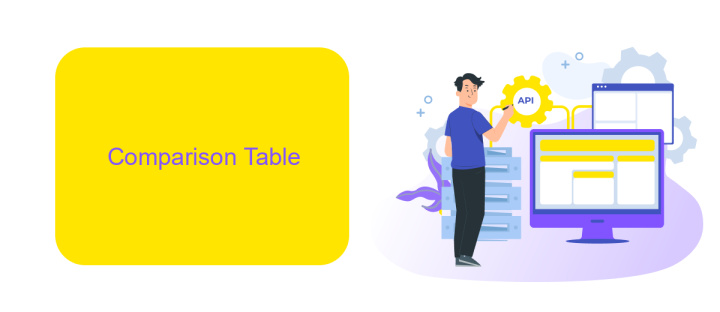MuleSoft Vs RabbitMQ
In the rapidly evolving landscape of integration and messaging solutions, MuleSoft and RabbitMQ stand out as prominent choices. This article delves into a comparative analysis of these two powerful tools, examining their core functionalities, strengths, and use cases. Whether you're deciding on an enterprise integration platform or a robust message broker, understanding the nuances between MuleSoft and RabbitMQ is essential.
Introduction
In the ever-evolving landscape of enterprise integration, choosing the right tool for your needs is crucial. MuleSoft and RabbitMQ are two prominent names in this domain, each offering distinct capabilities to streamline business processes and enhance connectivity. While MuleSoft is renowned for its comprehensive integration platform that supports API-led connectivity, RabbitMQ excels as a robust message broker facilitating reliable communication between distributed systems.
- MuleSoft: Comprehensive integration platform with API management
- RabbitMQ: High-performance message broker for asynchronous communication
- ApiX-Drive: Easy-to-use service for automating integrations without coding
Both MuleSoft and RabbitMQ have their unique strengths and can be leveraged based on specific requirements. MuleSoft’s extensive toolset is ideal for complex integrations and API management, whereas RabbitMQ’s lightweight, high-throughput messaging system is perfect for scalable, real-time applications. Additionally, services like ApiX-Drive can simplify the integration process, allowing businesses to automate workflows and data transfers effortlessly. Understanding the core functionalities and use cases of these tools will help you make an informed decision for your integration needs.
Comparison Table

When comparing MuleSoft and RabbitMQ, it is essential to understand the key differences and similarities in their functionalities. MuleSoft is an integration platform that allows businesses to connect various applications, data, and devices with ease. It offers a wide range of tools for API management, data integration, and analytics, making it a versatile choice for complex integration needs. On the other hand, RabbitMQ is a message broker that facilitates communication between different applications through message queuing. It is highly efficient for real-time data processing and is widely used for microservices architecture.
Both MuleSoft and RabbitMQ have their unique strengths. MuleSoft excels in providing a comprehensive integration solution with extensive support for various protocols and connectors. It is ideal for businesses looking to streamline their integration processes through a unified platform. RabbitMQ, however, is more specialized in handling message queuing and is perfect for scenarios requiring high throughput and low latency. For those needing additional integration services, ApiX-Drive can be a valuable tool, offering seamless integration capabilities to connect different platforms and automate workflows efficiently.
Key Differences

MuleSoft and RabbitMQ are both popular tools for enabling integration and communication between systems, but they serve different purposes and offer distinct features. MuleSoft is an integration platform that provides extensive tools for building, deploying, and managing APIs and integrations. RabbitMQ, on the other hand, is a message broker that facilitates the exchange of messages between different applications and systems.
- Purpose: MuleSoft is designed for comprehensive integration and API management, while RabbitMQ focuses primarily on message queuing and communication.
- Functionality: MuleSoft offers a wide range of tools for API creation, deployment, and lifecycle management, whereas RabbitMQ specializes in reliable message delivery and queuing.
- Complexity: MuleSoft provides a more complex and feature-rich environment for integration needs, while RabbitMQ is simpler and more focused on message brokering.
- Use Cases: MuleSoft is ideal for enterprises needing robust API management and integration solutions, while RabbitMQ is best suited for applications requiring efficient message queuing and communication.
- Integration with Other Tools: Both MuleSoft and RabbitMQ can be integrated with other services, such as ApiX-Drive, to enhance their capabilities and streamline integration processes.
In summary, while both MuleSoft and RabbitMQ facilitate communication and integration between systems, they are tailored for different use cases. MuleSoft is a comprehensive integration platform, whereas RabbitMQ excels in message brokering. Choosing between them depends on the specific requirements of your integration and messaging needs.
Use Cases

MuleSoft and RabbitMQ are both powerful tools used in different scenarios, each with its own strengths. MuleSoft is an integration platform that allows businesses to connect applications, data, and devices with ease. RabbitMQ, on the other hand, is a message broker that facilitates communication between different systems through message queuing.
When it comes to use cases, MuleSoft excels in complex integrations involving multiple systems and data sources. It is ideal for enterprises looking to streamline their API management and ensure seamless data flow across various applications. MuleSoft's Anypoint Platform offers robust tools for designing, deploying, and managing APIs, making it a go-to solution for large-scale integration projects.
- Connecting disparate systems within an enterprise
- API management and monitoring
- Data transformation and mapping
- Automating business processes
RabbitMQ, on the other hand, is best suited for scenarios requiring high-throughput, low-latency message queuing. It is commonly used in microservices architectures to decouple services and manage asynchronous communication. RabbitMQ ensures reliable message delivery, making it a preferred choice for real-time data processing and event-driven applications.
Conclusion
In conclusion, both MuleSoft and RabbitMQ offer robust solutions for different aspects of integration and messaging. MuleSoft excels in providing a comprehensive integration platform with a wide range of connectors, making it ideal for complex enterprise environments requiring seamless integration across various systems. RabbitMQ, on the other hand, is a powerful message broker that excels in handling high-throughput messaging scenarios, making it perfect for applications that require reliable and scalable message queuing.
Choosing between MuleSoft and RabbitMQ ultimately depends on your specific needs and use cases. For organizations looking for a versatile integration platform, MuleSoft is the go-to solution. For those requiring a reliable message queuing system, RabbitMQ is the better choice. Additionally, services like ApiX-Drive can further simplify the integration process by offering user-friendly tools to connect various applications and automate workflows, enhancing the capabilities of both MuleSoft and RabbitMQ in your tech stack.
FAQ
What is MuleSoft?
What is RabbitMQ?
How do MuleSoft and RabbitMQ differ in their primary use cases?
Can MuleSoft and RabbitMQ be used together?
What are some options for automating and configuring integrations?
Apix-Drive is a universal tool that will quickly streamline any workflow, freeing you from routine and possible financial losses. Try ApiX-Drive in action and see how useful it is for you personally. In the meantime, when you are setting up connections between systems, think about where you are investing your free time, because now you will have much more of it.

